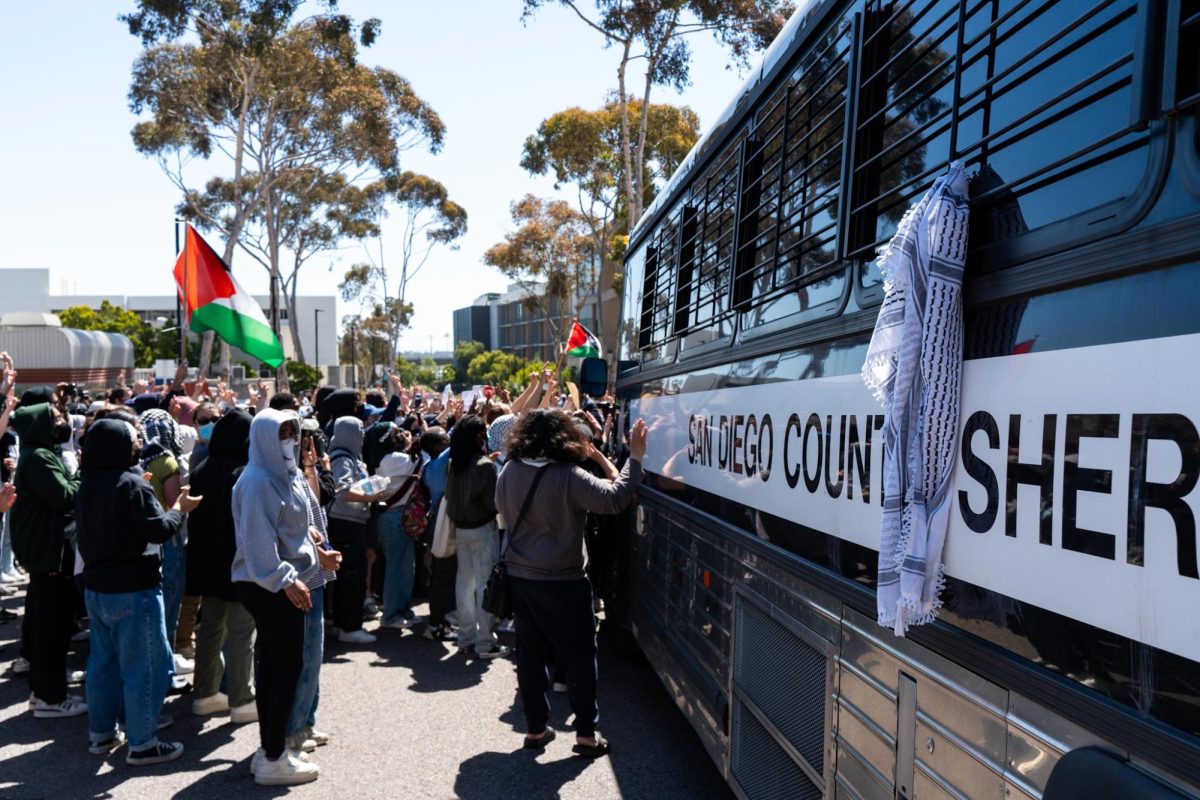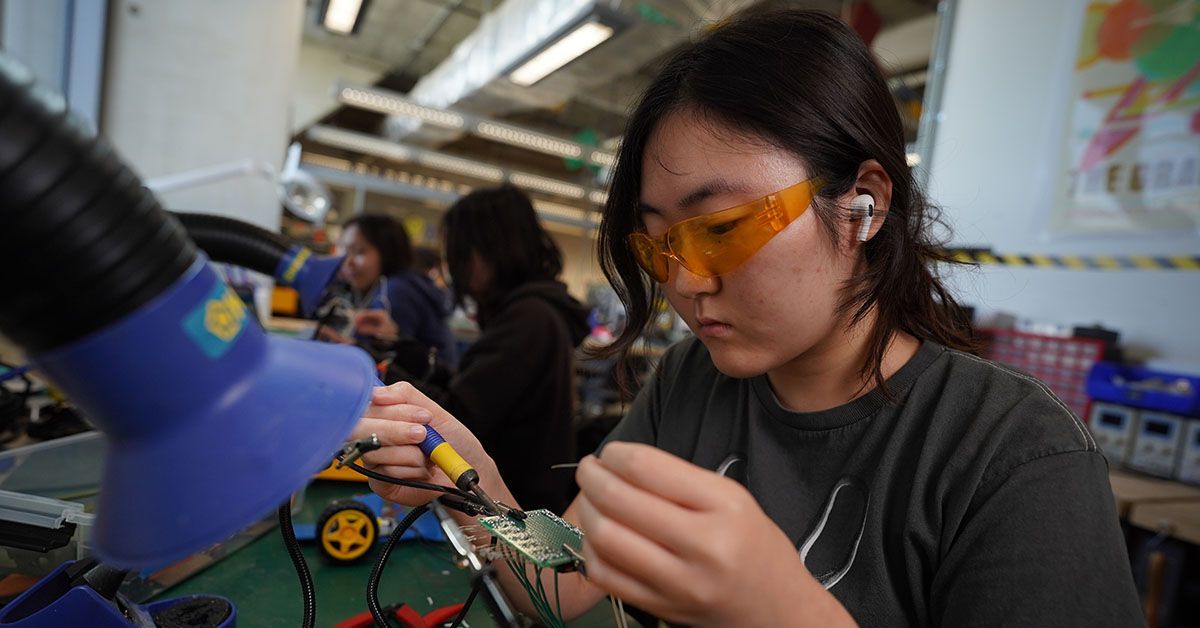Still looking for a valentine? We speak to students about how they have met their partners and who is still looking for love (or maybe just a little company).
“So how’d you meet?” There’s always a story, whether it be by chance from walking someone home from a party, having a similar circle of friends, or literally running into them on Library Walk on your way to class, and so on.
It turns out that there are plenty of ways people meet, with some ways being more common than others. On one hand, dating apps and sites such as Tinder and Grindr are widely used, especially among college students and young adults. According to one survey, around 91 percent of college students had mobile dating apps installed on their phones. Not only are they used for meeting that special someone, but they are also great ways to make friends. Users can edit their profiles to identify what they’re specifically looking for. For example, Tammy, 20, can write “ just looking for a drinking buddy” in her bio. Dating apps can even be used by couples or more adventurous pairs looking to have more fun with others. Whatever it’s used for, online apps definitely take up a large portion of how people meet at UC San Diego.
“I met my boyfriend on Tinder,” John Muir College junior Ana Cervantez said. “That’s how a lot of couples do it nowadays.”
Other social media apps had also helped students navigate the dating scene on campus. In a survey conducted by the UCSD Guardian about the dating scene at UCSD, students also reported using platforms such as Instagram and Facebook groups to meet others. Social media overall takes up 21.5 percent at UCSD for how people meet.
Not so keen on the social media scene? 32.1 percent of our surveyors in a relationship had met in person before college, such as in high school or when they were kids. Moreover, the remaining 46.4 percent percent had met in their social circles through student organizations, parties and social gatherings, church, and even courses.
“She’s my ex now, but we met in class and it was great what we had while it lasted.” Revelle College senior Joseph Vo commented. “We had our differences.”
UC Socially Dead — our school’s less-esteemed moniker for lacking community — may not be the most thriving garden for socializing. So the dating scene may not be the most vivacious thrill going around, with a reported 62.6 percent of our pollsters who said “No” to if they were in a serious relationship. 37.6 percent of respondents said that they had never been in one.
But the few less-lonely hearts out there seem to make it through. If you are out on the dating scene, one study conducted by Mic magazine using Google consumer data says that most people meet their partners in person. According to its 2,373-person survey, more 18 to 34-year-olds met their current significant others through mutual friends than through any other means where 39 percent of respondents said they met “through friends in common.” This was closely followed by 22 percent who said they met “out in a social setting.” Just like it is in the movies, the vis-a-vis interaction can be a very special serendipitous event for many and be more meaningful than meeting through a screen.
But is dating a real priority for students? According to our poll 50.6 percent responded “No” to if they were looking for love. One student in particular doesn’t really see the appeal.
“I’m really not looking for anybody,” Thurgood Marshall senior Jessica Khan said. “I really don’t have a lot of time.”
She notes that she had some special relationships but never really felt a sense of spark or connection mainly due to the effort she couldn’t put in. After briefly telling me her dating history — a few flings and a one-year relationship— it really came down to the amount of time for Khan. “I think we are still really young,” she commented. “There’s no rush. I am just focusing on school and my career.”
Prioritizing a social scene can be a difficult thing to do, even in college where it seems like we have all the fertilizer we need to grow more friendships with all the new people surrounding us. Course load, finances, eating, and just having a few good friends seems to be a main priority for many, and maintaining a healthy relationship may be a bit too much for some students. Others just may not have found someone to connect with yet. Whatever the case, Valentine’s Day is a special day geared toward love and its expression. For some students, it may not be sexual or romantic love, but something special for best friends and family.
The origins of Valentine’s Day are hardly romantic, with historical practices such as physical whippings with raw animal hide. Valentine’s Day can be traced back to the Roman holiday of Lupercalia where goats and dogs were sacrificed, everyone was drunk, and women were to expect beatings in hopes of becoming more fertile. The holiday most likely got its name from when the emperor at the time executed two men, both named Valentine, and the Catholic Church eventually honored their martyrdom. Over time, Western authors such as William Shakespeare enshrined the holiday. This then carried over to the New World and the tradition lived on long enough where businesses such as Hallmark in 1913 could make a profit off the celebration.
Fast forward to modern love where we find ourselves romanticizing the idea of, well, romance. The holiday in and of itself can create pressure for some, even enough to have a “counter” holiday known as Singles Awareness Day, Singles Appreciation Day, or simply SAD for short. Celebrated on Feb. 15, those not currently in a serious relationship rejoice out of spite for Valentine’s Day, as a special day of the year, or for other reasons. Ways to celebrate according to daysoftheyear.com are to send other single friends presents or even send flowers to yourself. It also suggests that it is common for people to wear green, as it is the complementary opposite of red, or even black to represent the celebratory absence.
Not only can Valentine’s Day put pressure on couples, but also on the LGBTQ community as heterosexual relationships are the apparent norm for Hallmark films as are the stereotypically gendered hedgehogs on your Valentine’s Day card. As the Huffington Post reports, the holiday can be largely centered on heterosexual couples with queer representation hard to find. For one couple in particular, they noted that, “I feel like our love would never be accepted into the traditional understanding of Valentine’s Day. People will look at us strangely and might even get violent if we had a candlelight dinner at a restaurant together, or even if we held hands in public.”
Diversity in our society can be easily cast out in the media and create overwhelming expectations as mentioned by the couple. This phenomenon is even more distorted when realizing that queer relationships are not at all different from that of heterosexual relationships. According to a 2012 Williams Institute study, “Same-sex couples in Census 2010: Race and Ethnicity,” in general, the racial and ethnic distributions of same-sex couples by households were similar to that of heterosexual households. Interracial couples may be more common than people realize. According to the same study, the states with the largest percentage of interracial or interethnic same-sex couple households include: Washington, California, Nevada, Arizona, New Mexico, Colorado, Texas, Oklahoma, Alaska, and Hawaii, as well as the District of Columbia.
Single, in a relationship, or whatever be the case, love exists in a variety of different ways. As our spotlight student Jessica Khan expressed“It’s a special thing, I would think … to be in love with a best friend and to travel the world with them. But it’s kinda like you need to love yourself first in order to love others.”
However you’re spending Feb. 14 this year, someone out there loves you, whether that may be your parents or your roommates or your dog. We all have a lot more than we realize, such as this guy figured out:
All names under alias.
Main image from Los Angeles Magazine. Survey data and graphics courtesy of UCSD Guardian Data Visualization team.













